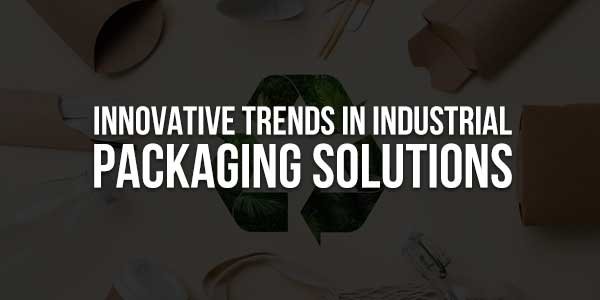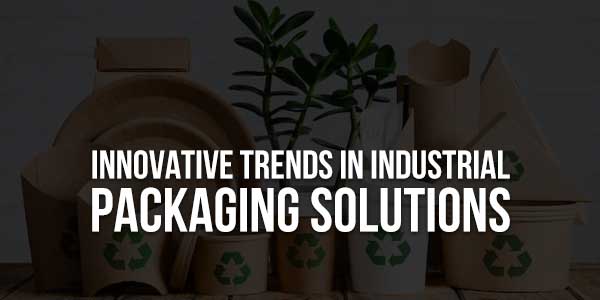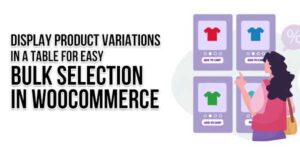
The packaging industry, often overlooked in favour of other sectors, plays a crucial role in supporting global trade and enhancing supply chain efficiency. The need for better, more cost-effective, and sustainable packaging solutions has never been more pressing. As industries evolve, so too do the technologies and strategies surrounding packaging. Today, industrial packaging is undergoing a transformation, with new trends that promise to optimise logistics, reduce environmental impact, and improve product safety.
Table of Contents
1.) Sustainability Takes Centre Stage:
Sustainability has moved from a niche concern to a mainstream priority. Industries are increasingly adopting environmentally friendly materials, recycling processes, and packaging techniques to minimise their ecological footprint. From biodegradable plastics and recyclable materials to innovative designs that reduce material waste, the packaging industry is working hard to align with global sustainability goals. The use of post-consumer recycled (PCR) materials and the push for circular economy models ensures that packaging is not just discarded but can be reused or recycled, contributing to less waste in landfills.
One of the significant breakthroughs is the development of compostable packaging materials. With the rising concerns over plastic pollution, compostable alternatives are being explored for industrial packaging, offering a potential solution for industries dealing with single-use plastics. This shift is not only in response to consumer demand but also to regulatory pressure, as governments worldwide enforce stricter environmental laws.
2.) Smart Packaging Technology:
The rise of the Internet of Things (IoT) has significantly influenced industrial packaging. “Smart packaging” is a rapidly growing trend, where packaging is integrated with sensors, RFID (radio-frequency identification) tags, and QR codes to provide real-time data on the condition of the product. This can include temperature monitoring for sensitive goods, tracking the product’s journey across the supply chain, or providing consumers with more information via scannable codes.
For instance, temperature-sensitive goods such as pharmaceuticals or perishable food can benefit greatly from this technology. Smart sensors embedded in the packaging can alert supply chain managers if a product has been exposed to extreme temperatures, ensuring that the product maintains its quality and safety.
Additionally, track and trace systems using RFID technology allow for better visibility across the supply chain. These systems enable companies to monitor their products’ movement in real-time, reducing theft, ensuring on-time delivery, and even offering consumers the ability to authenticate products.
3.) Automation In Packaging Processes:
Automation has taken the industrial sector by storm, and packaging is no exception. With the rising need for efficiency, speed, and cost-reduction, packaging lines are becoming increasingly automated. From robotic arms that can quickly assemble packaging materials to fully automated systems that are capable of sealing, labeling, and preparing goods for shipment, automation ensures that the packaging process is faster, safer, and more cost-efficient.
The demand for speed has accelerated in the e-commerce sector, where quick turnarounds are critical. Automation also reduces human error and the risk of injury on the factory floor, which is a crucial consideration for businesses looking to improve both efficiency and workplace safety.
4.) Packaging As A Marketing Tool:
Industrial packaging is no longer just about functionality. Companies are realising the potential of packaging to serve as a powerful marketing tool. With the increase in consumer awareness and competition, companies are paying more attention to how their packaging stands out on the shelves or in shipping boxes. Custom-designed packaging that reflects a brand’s personality, values, and sustainability goals can differentiate a product in a crowded market.
Personalised packaging is another growing trend. For instance, offering tailored packaging for specific regions or even individual customers helps foster a deeper connection with the target audience. Digital printing technology has made it easier and more affordable to customise packaging, allowing brands to experiment with limited edition designs, seasonal themes, or even specific customer names on the packaging.

5.) Lightweight And Space-Efficient Solutions:
As industries strive to reduce shipping costs and improve their carbon footprint, lightweight packaging is gaining traction. By using thinner materials or more efficient designs, manufacturers can reduce the overall weight of the packaging without compromising the product’s protection. This not only lowers shipping expenses but also reduces the environmental impact by allowing more goods to be transported per shipment, cutting down on emissions.
Moreover, space-efficient packaging reduces the volume of packaging materials used and optimises storage and shipping space. This is especially valuable in industries like automotive and electronics, where parts can be packed more tightly without compromising safety.
6.) 3D Printing In Packaging Design:
One of the most exciting technological advancements in industrial packaging is the use of 3D printing. This technology allows for the creation of highly customized packaging solutions that are tailored to the exact shape and size of the product, which significantly reduces material waste. Additionally, 3D printing enables quick prototyping, allowing companies to test different designs before committing to mass production.
The ability to create bespoke packaging in small batches using 3D printing also gives companies a cost-effective way to experiment with new concepts and cater to niche markets. Whether it’s intricate structural designs or custom-sized boxes, 3D printing enables the creation of highly optimised packaging solutions.
7.) E-Commerce-Driven Packaging Innovations:
The explosive growth of e-commerce has led to significant changes in packaging requirements. With consumers demanding faster delivery times and products arriving in perfect condition, companies are focusing on packaging solutions that enhance the customer experience. Protective packaging materials are more innovative than ever, ensuring that products survive the rigours of transportation without unnecessary waste.
Subscription box services have also led to the rise of more personalised, aesthetically pleasing packaging that aligns with the brand’s identity. The trend towards unboxing experiences has made packaging a crucial part of the consumer journey, with companies designing their packaging to provide delight and value from the moment the package arrives.
Conclusion:
As industrial packaging continues to evolve, companies are adopting a wide range of innovative trends to address both the challenges and opportunities within the sector. Whether it’s focusing on sustainability, incorporating advanced technology, or leveraging design as a marketing tool, the future of industrial packaging is undoubtedly dynamic and full of potential.
The continued push towards more sustainable, efficient, and consumer-focused packaging solutions will ensure that the packaging industry remains at the forefront of technological advancements, contributing to global supply chain improvements and reducing the environmental impact along the way. As companies embrace these trends, they will not only meet the demands of today’s market but also shape the packaging landscape for years to come.

 About the Author:
About the Author:












Thank you for sharing such insightful content. It’s always valuable to see well-researched perspectives in this field. Looking forward to more posts like this.
Welcome here and thanks for reading our article and sharing your view. This will be very helpful to us to let us motivate to provide you with more awesome and valuable content from a different mind. Thanks again.